Paronychia is a common foot disease, mostly caused by ingrown nails. Ingredient toenails are more common on the big toe. The main cause of the disease is the restriction of the front upper when wearing shoes, the toenail is pressed toward the 2nd toe, and the nail fold is squeezed towards the toenail, followed by the toenail being trimmed too deeply or repeated pedicure after painful symptoms, and residual toenail edge. The nails embed into soft tissue causing pain and infection, and abscesses and advanced hyperplastic granulomas develop.
The keratinized hyperplasia of paronychia soft tissue when ingrown nail is not accompanied by infection, and there is mild pain when walking. When an infection occurs, there will be obvious local redness, swelling, heat, pain, hyperplasia of granulation tissue, and secretions. Severe inflammation can cause lymphangitis and osteomyelitis.
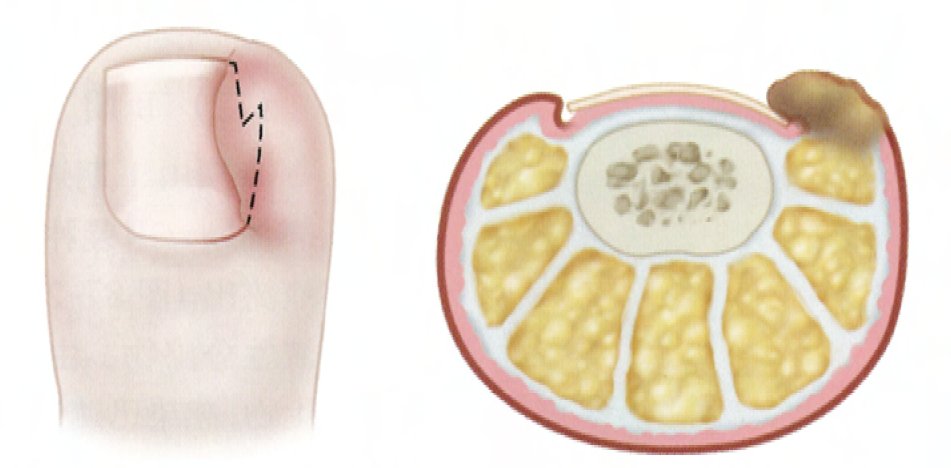
Schematic diagram of ingrown paronychia
About 70% of paronychia can be used The technique of stuffing cotton has been cured. Cotton stuffing can be performed at home without affecting daily work and life, and at the same time avoiding the pain of surgery. The recurrence rate after recovery is very low, which is a very good treatment method. Of course, the premise is that the principles of treatment must be followed and persisted for a long time. As a hand and foot surgeon, I will demonstrate the operation below and give you a detailed explanation.
0 1
1. Clean the feet, clean the feet, and prepare materials—one medical cotton swab and one toothpick.
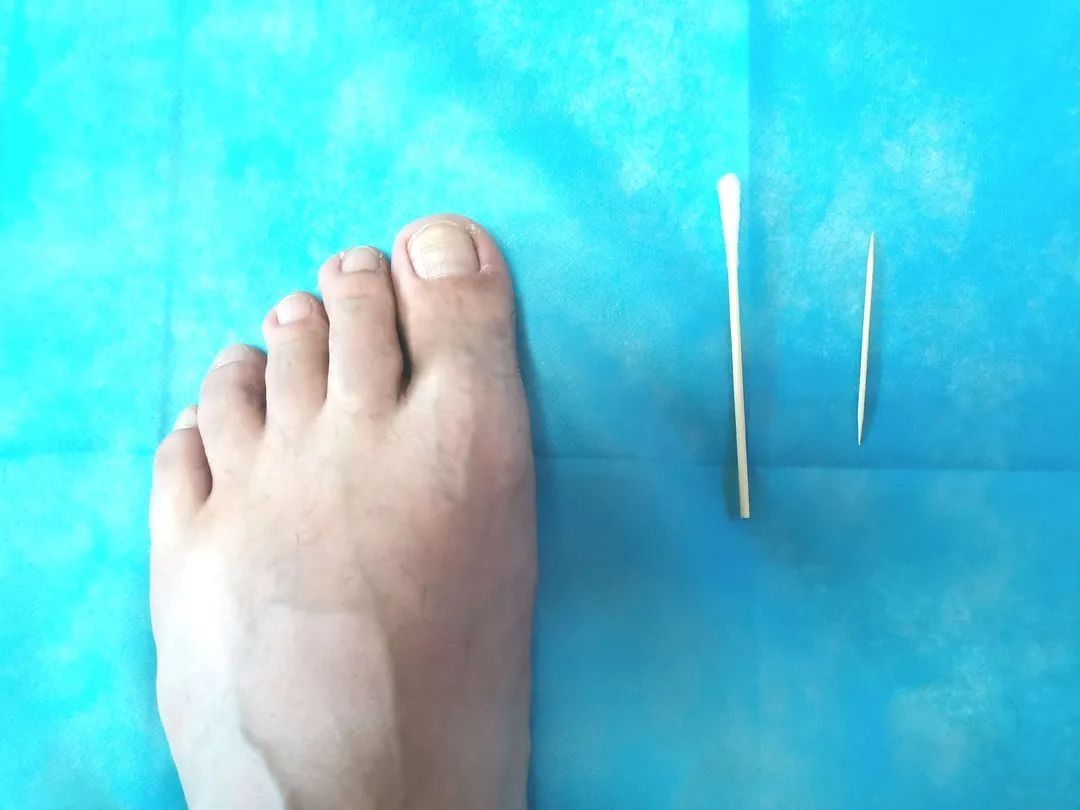
0 2
2. Gently tear the cotton at the tip of the cotton swab and take out the thin layer.
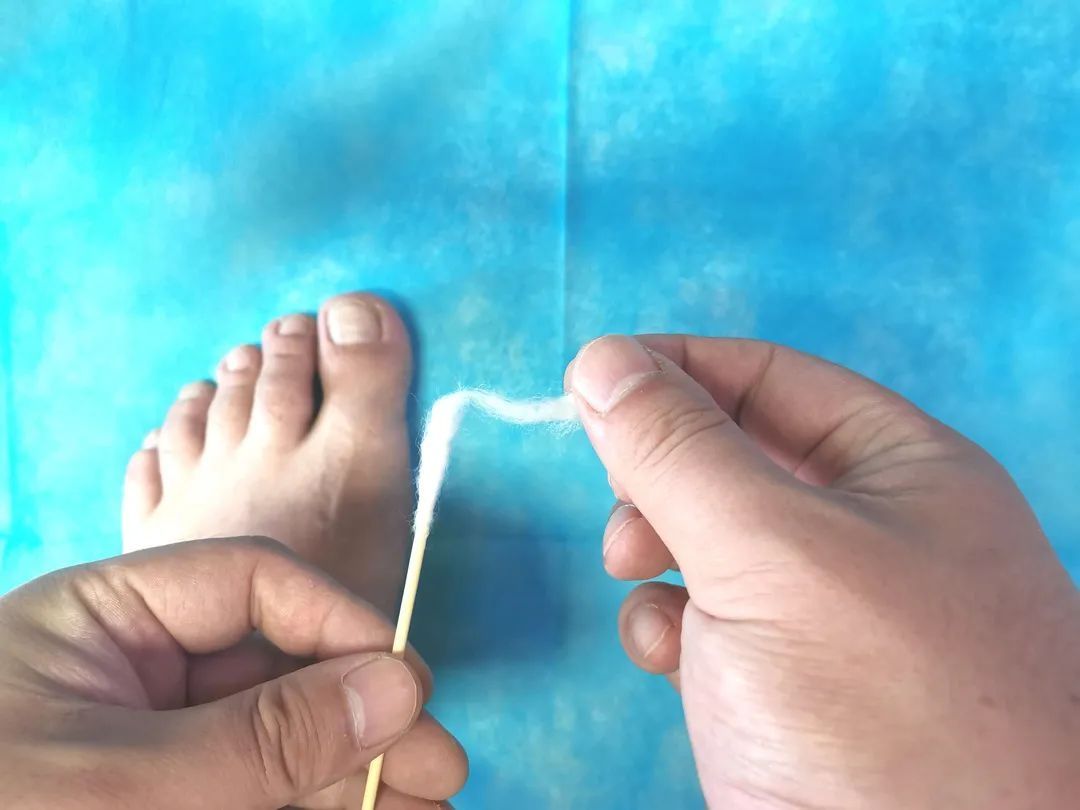
0 3
Knead the cotton into small slivers, not too large, not too large It is easy to be inserted into the nail groove and may cause pain. For the first time, only a little cotton fiber is needed to be inserted into the nail groove and under the nail tip.

0 4
Use a toothpick to gently press the tampon into the nail groove – this It is also a way of drainage of the nail groove, which can use the siphon effect of cotton to drain the purulent secretions of the nail groove.
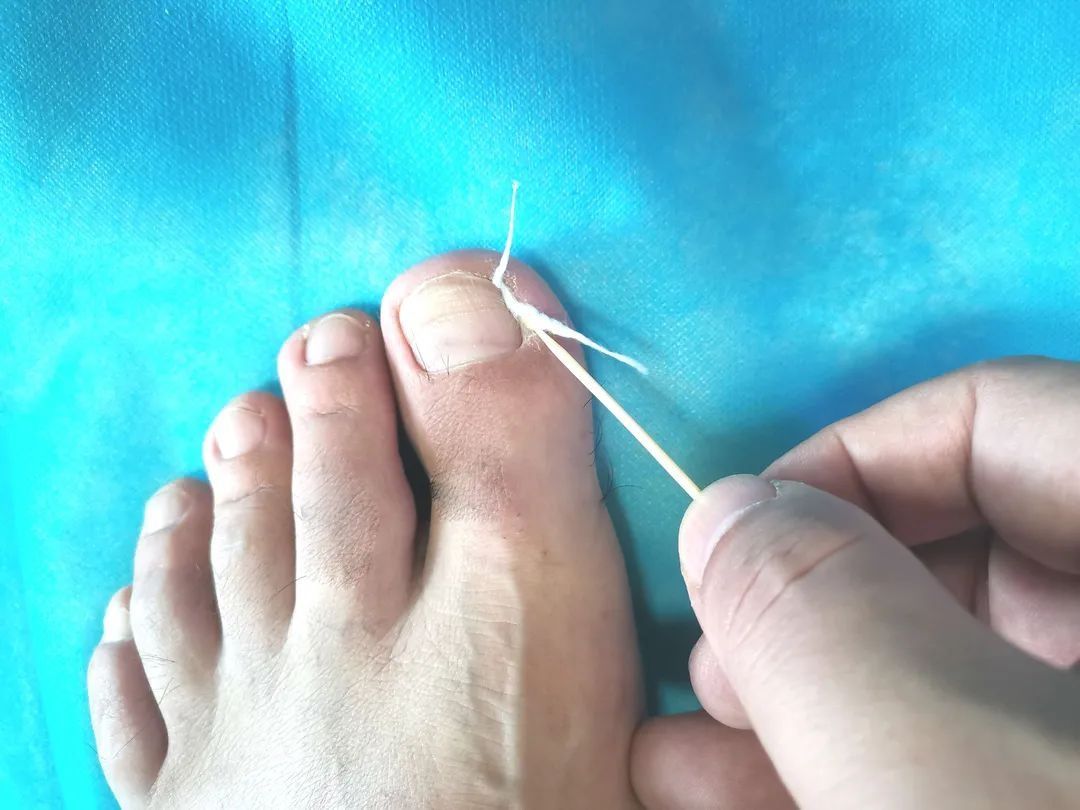
0 5
Move the tampon from the proximal end (heel direction) to the distal end ( Toe direction) gradually advance until below the tip of the nail.
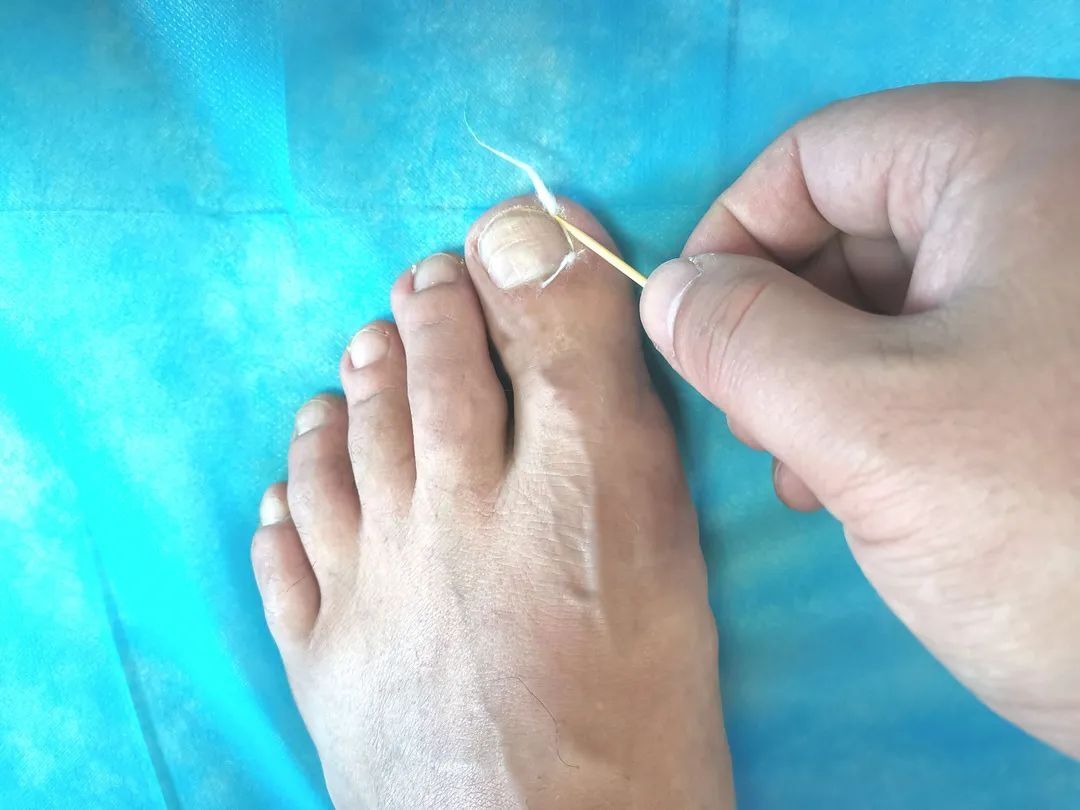
0 6
Use a toothpick to put the tampon under the tip of the nail — pay attention to the Angle, can be straight down.
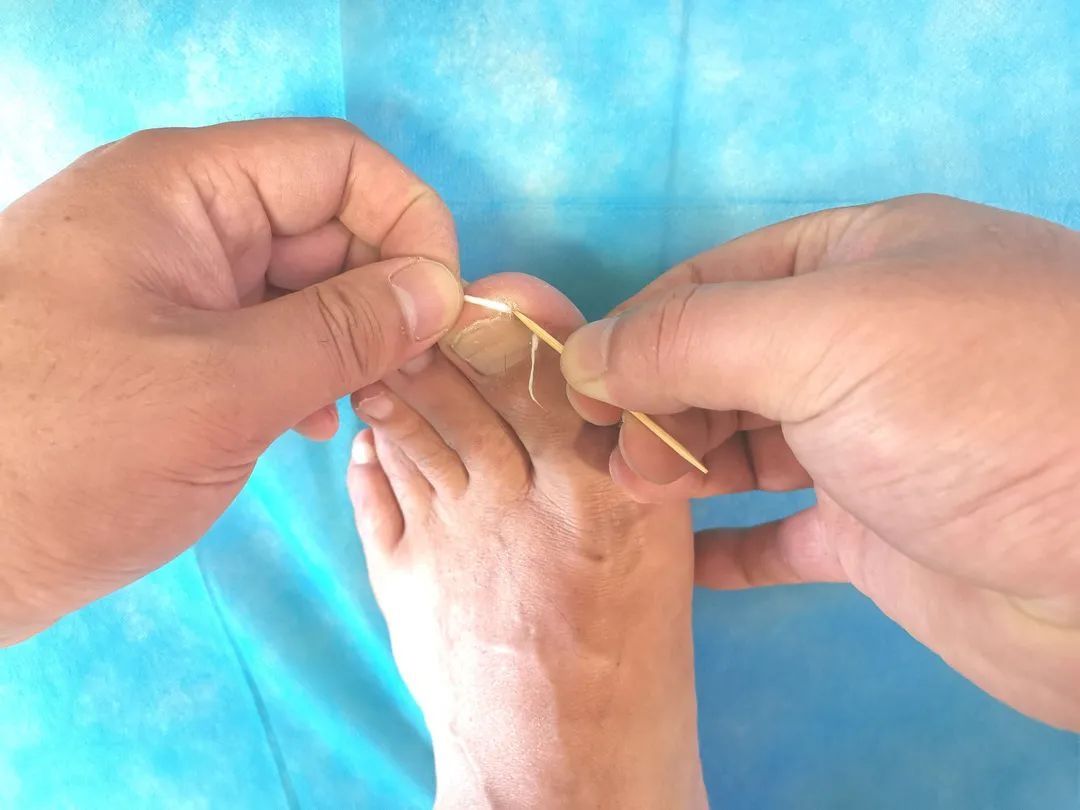
0 7
The stuffed sliver is as shown in the figure below, but it must be below the tip. If the first time because of pain can not reach under the nail tip, it does not matter, you can fill the gap between the nail tip and the nail fold until it is filled under the nail tip through multiple fillings. Generally, more severe paronychia can be filled 2-3 times. Below the nail tip, the symptoms can be relieved only when the tampon is stuffed below the nail tip. With the thickening of the tampon, the pain can be completely relieved soon.
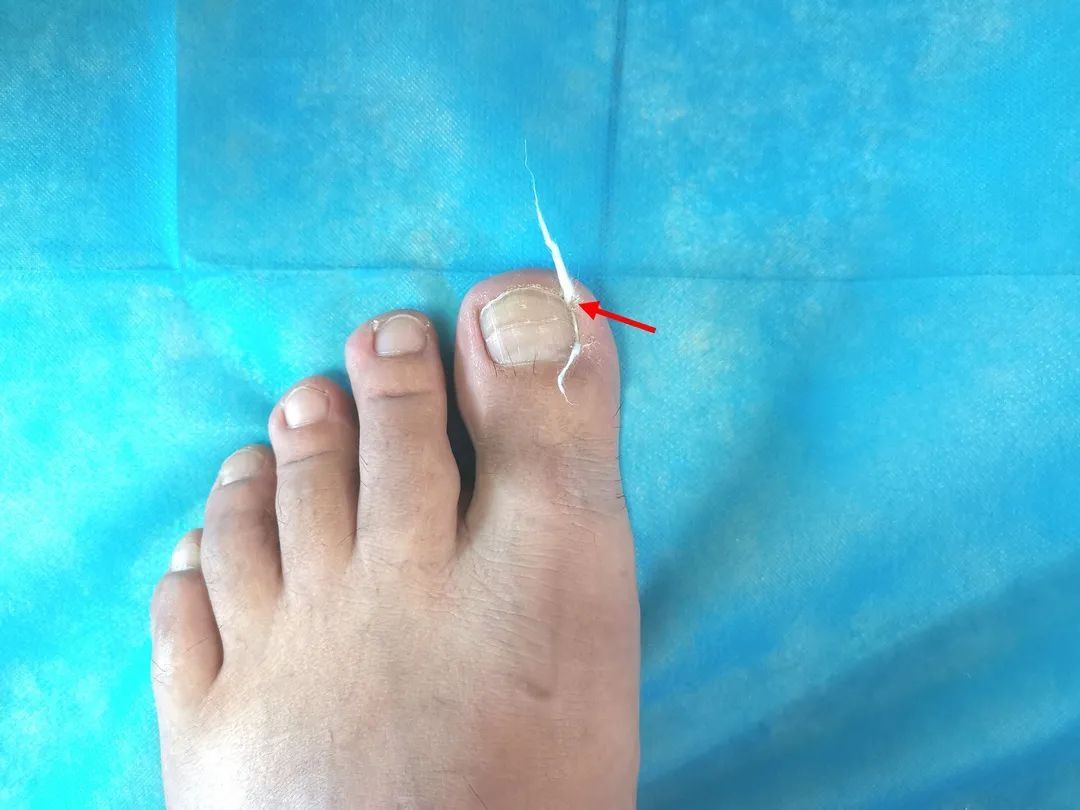
0 8
Once fully stuffed, trim off excess cotton. If ingrown paronychia is present in both paronychia, both paronychia can be filled at the same time.
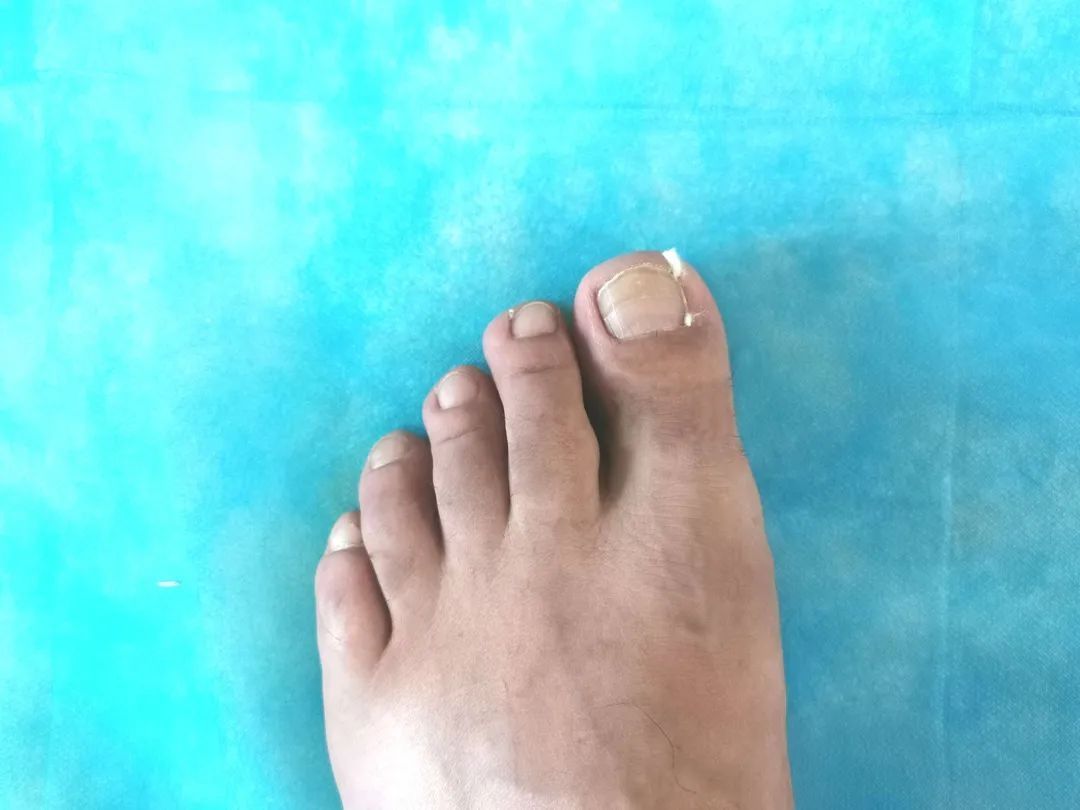
0 9
Change it every morning and evening, pay attention to cleaning the feet, wait for the tip of the nails Fully grown and you’re done. Note that the packing must be done gradually and slowly, and the amount and degree of packing should not be increased suddenly in a hurry, which may aggravate the pain and make it difficult to adhere to.
Precautions
1. Pain may occur at the beginning of tamponade, and you need to adapt slowly. Generally, as long as the cotton sliver is stuffed to the tip of the nailThe pain can be significantly relieved within the next 24 hours. When the symptoms are completely relieved, packing is still required, and the nail tip can be regarded as a cure until the nail tip grows completely.
2. The stuffed cotton needs to be replaced every day. Medical cotton swabs are sterile items, and toothpicks can be sterilized with alcohol (it is better to use fine tweezers for medical or cosmetic use instead of toothpicks if possible). It is enough to be clean and clean. It is not required that the operation should follow the aseptic principle. The environment in the Jiagou is actually much dirtier than that of clean cotton.
3. The effect will be better when the treatment is combined with foot soaking in warm water and raising the affected limb. At the same time, it is recommended to wear loose shoes, because home treatment does not affect work and life. It is not required to keep the affected limb elevated at all times. It is sufficient to elevate the foot in appropriate occasions, such as placing the foot on the bench, or even tilting it up. Erlang legs can also be.
4. Clean the feet and keep the feet dry. Personally, it is recommended not to use iodophor, alcohol and other drug disinfectants, but using a small amount of erythromycin eye ointment or Baiduobang ointment is effective. Can reduce sticking.
5. Toenails grow slowly, about 2-4mm per month, so don’t be in a hurry, you need to go step by step. When the lateral nail tip is found during the filling process, it is not recommended to cut it directly. If the tip of the nail tip is very sharp, the tip can be cut off by about 1mm. If the tip of the nail is cut too much, the symptoms may be relieved immediately, but the nail continues to move farther. As the nail grows, ingrown nails will recur. Only when all the nails grow out of the soft tissue can it be considered a cure. Excessive removal of the nail tip will prolong the treatment time.
6. When the toenail grows out completely, we need to use the correct method to trim it. It is clinically found that patients who are prone to ingrown paronychia have a common feature. It is completely removed along both sides of the nail groove, which will increase the possibility of disease. Personally, it is recommended to cut the nails horizontally (blank on both sides).
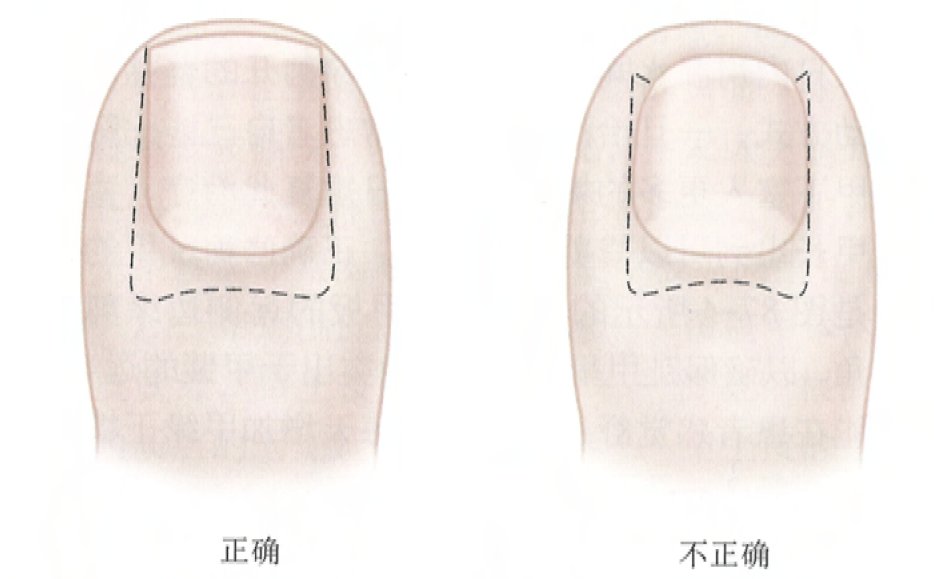
7. Paronychia may be combined with curly nails, phalangeal osteomyelitis, etc. Cotton stuffing is not suitable for all ingrown nails For severe ingrown paronychia, it is recommended to consult a doctor before taking corresponding measures. Severe ingrown paronychia requires surgery.
Contributed by: Zhang Xiaoyu, Hand and Foot Surgery Source: Hunan Second People’s Hospital